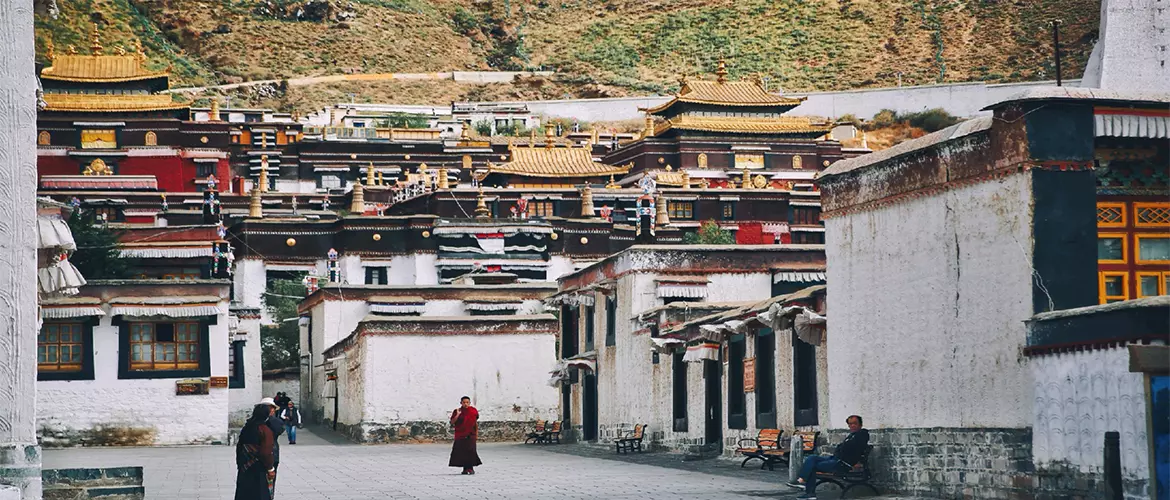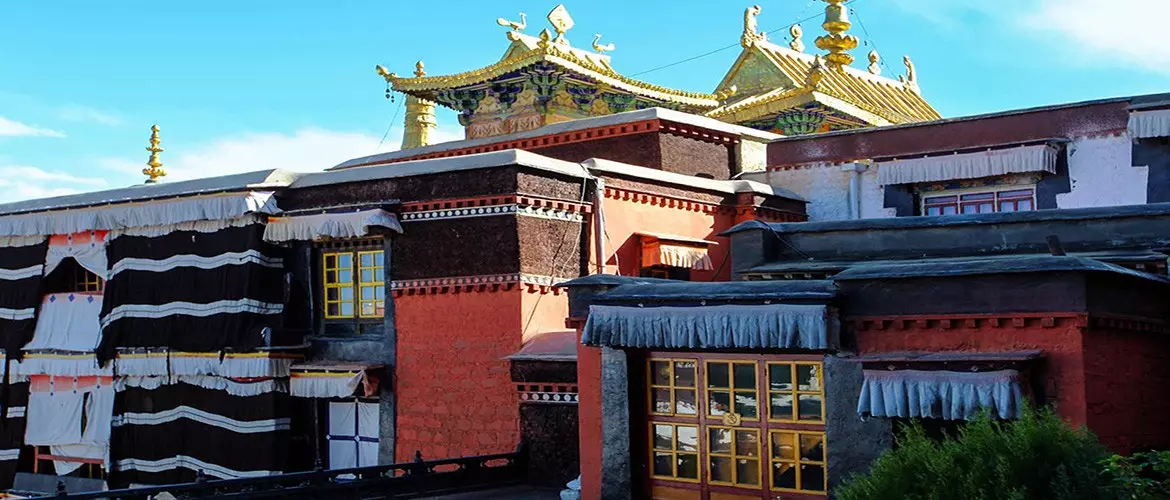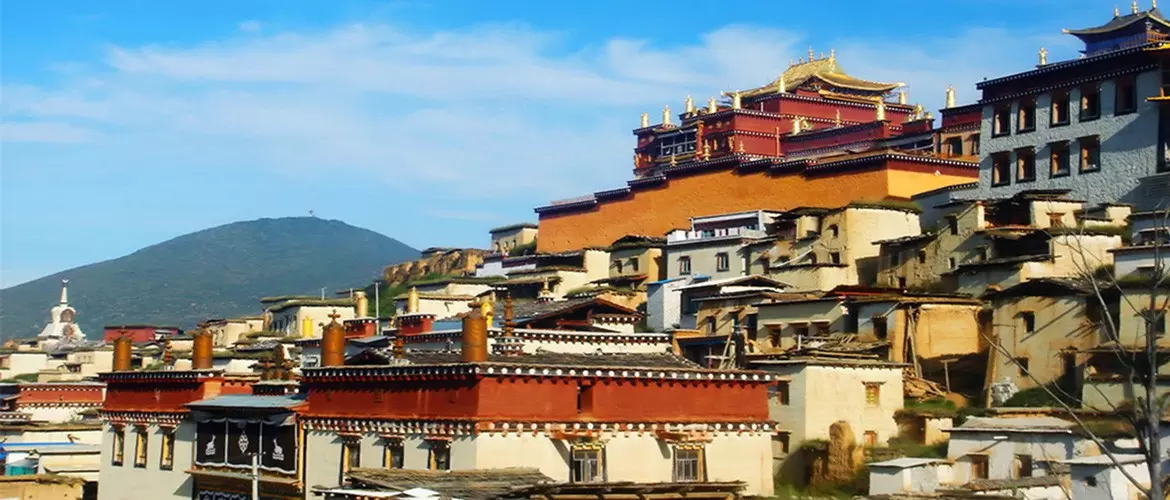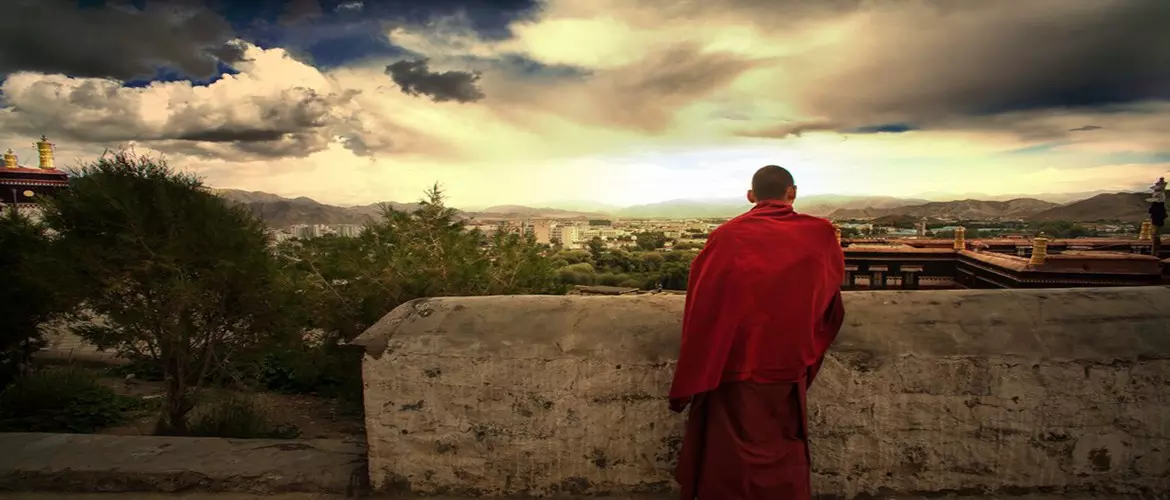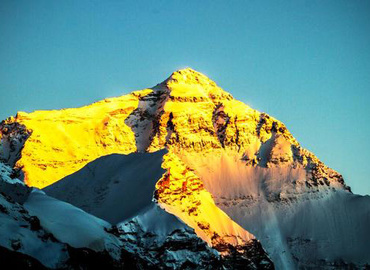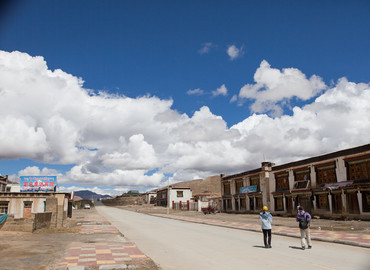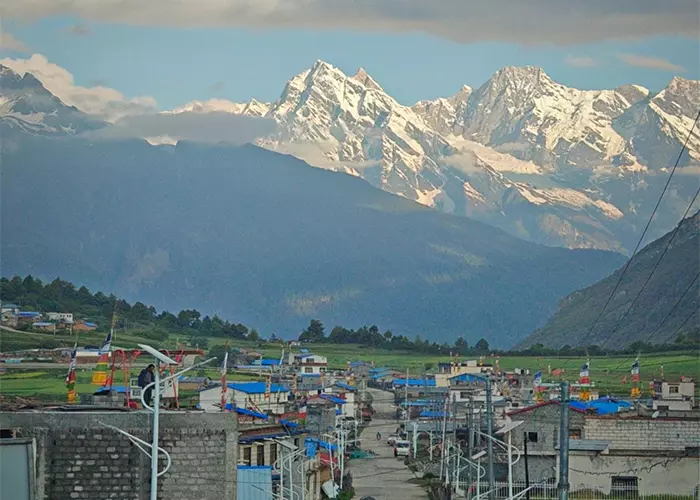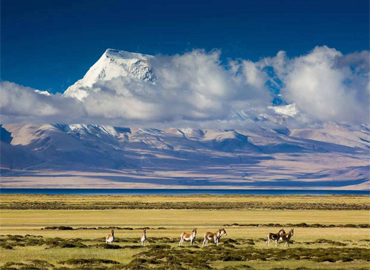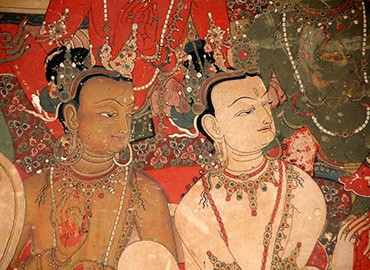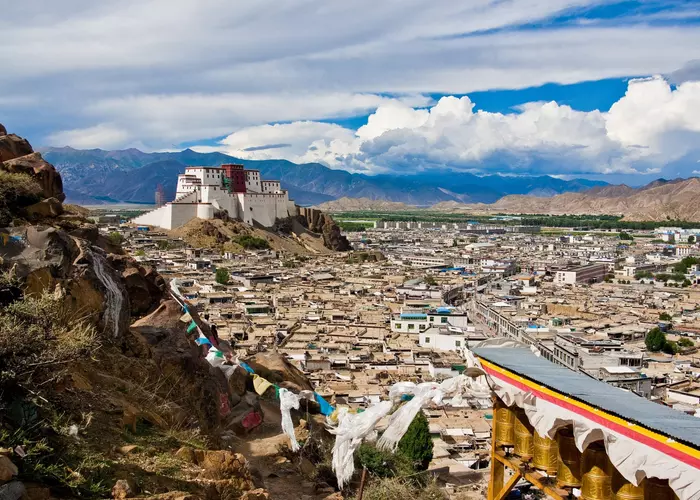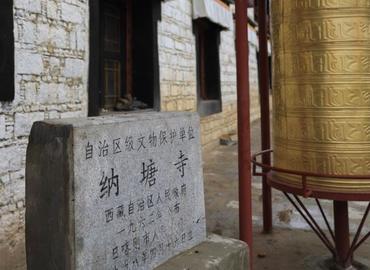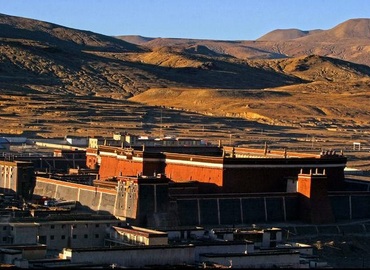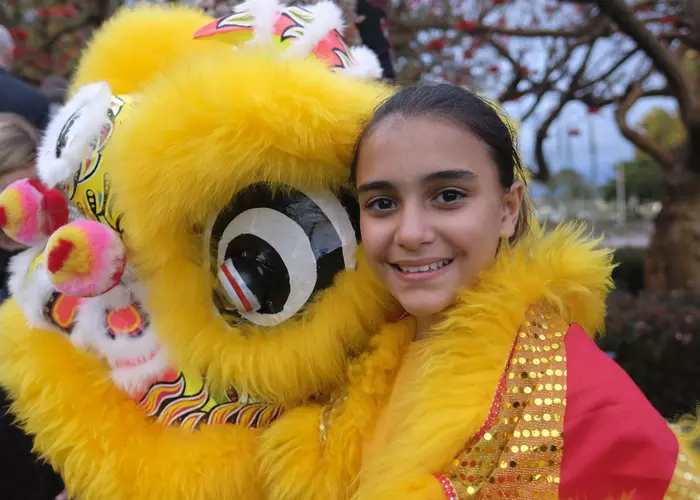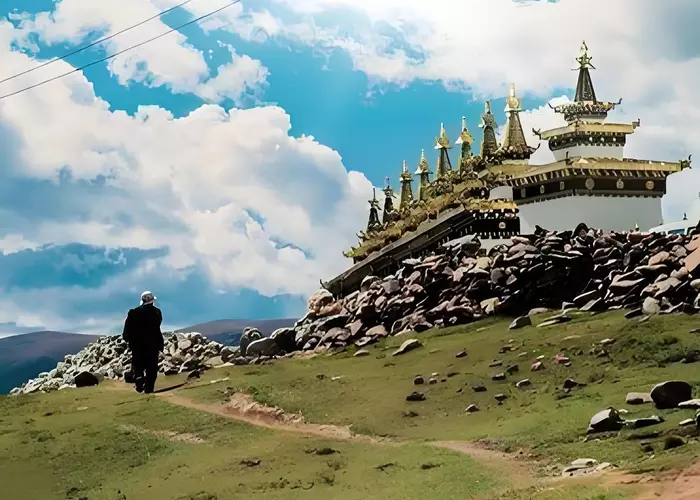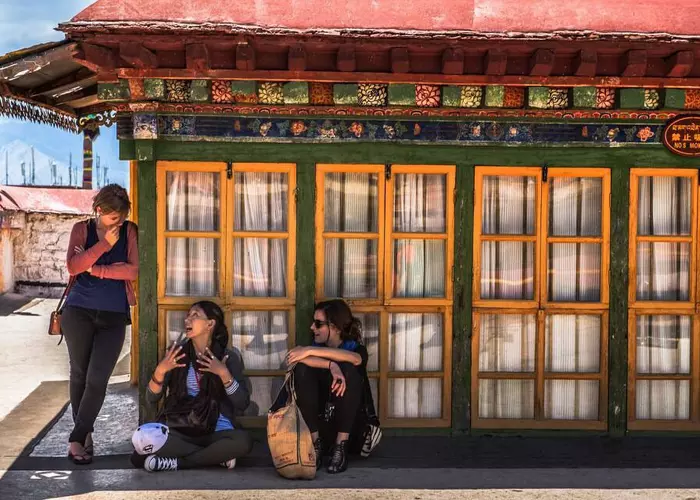Located at the foot of Niseri Mountain in Shigatse, Tibet Autonomous Region, Tashi Lhunpo Monastery is a large Tibetan Gelug Buddhist monastery in the U-Tsang area. It was founded in 1447 by the 1st Dalai Lama Gedun Drupa, a disciple of the Gelugpa Je Tsongkhapa, and it took 12 years to complete. Since the Fourth Panchen Lama, Tashi Lhunpo Monastery has been the traditional seat of successive Panchen Lamas.
Tashi Lhunpo Monastery means "Auspicious Mount Sumeru" in Tibetan. It's one of the six major monasteries of the Gelug Sect of Tibetan Buddhism. The other five are Ganden Monastery, Drepung Monastery, Sera Monastery, Ta'er Monastery, Labrang Monastery.
Layout and Features
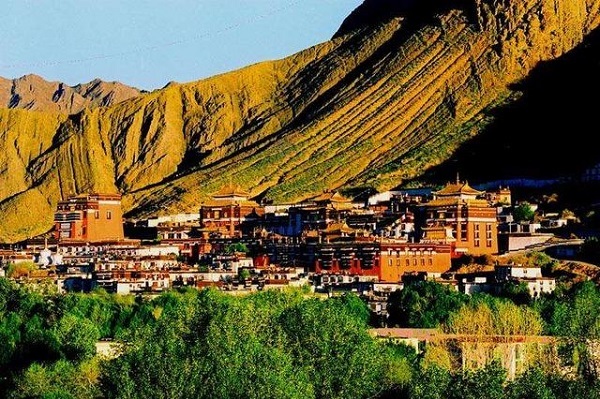
Tashi Lhunpo Monastery stands on the east hillside of Niseri Mountain in Western Shigatse, covering an area of 150 thousand square meters, with palace walls surrounded. The monastery is against the high mountains, sitting from north to south. And the temples are successively connected in sequence, with balanced density, which looks magnificent. Tashi Lhunpo Monastery has four Great Dratsangs (abbeys), 62 Kamcuns (decided by the origin of monks), and nearly 60 Sutra Halls. Its center is the hall area, with Tsochin Hall, four Great Dratsangs, Panchen Lama's Palace, Jamba Chyenmu, Stupa Hall, and so on. On the highway far from Shigatse, you can see the golden dome of Tashilhunpo Monastery in the west of the city glistening in the sun. From the entrance of the monastery, visitors get a grand view. Above the white monastic quarters is a crowd of ochre buildings topped with gold – the stupa halls of the past Panchen Lamas.
Tsochin Hall
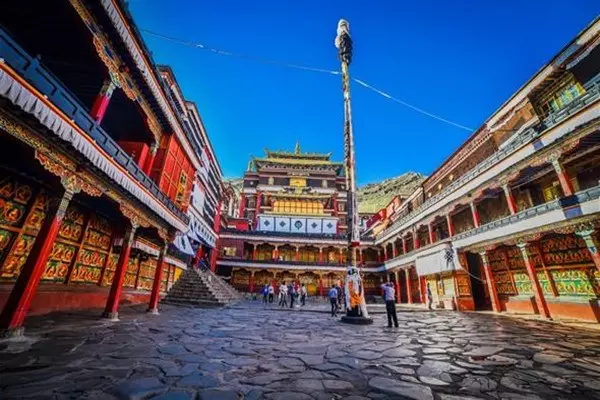
Tsochin Hall is the main hall of Tashi Lhunpo Monastery. It's the temple that catches your eye when you step into the gate of this monastery. Outside the temple gate, there is a courtyard surrounded by corridors, which is the monastery's lecture hall. In the past, Panchen Lamas often preached scriptures to the whole monastery at this place, and it was also the venue for the lamas to have Buddhist debates. In the front of the hall is the Great Sutra Hall, and in the center of the hall is the seat of the Panchen Lama. And there are three other Buddhist halls behind the sutra hall, with the Sakyamuni Hall in the middle, the Maitreya Hall in the west and the Tara Hall in the east.
Jamba Chyenmu
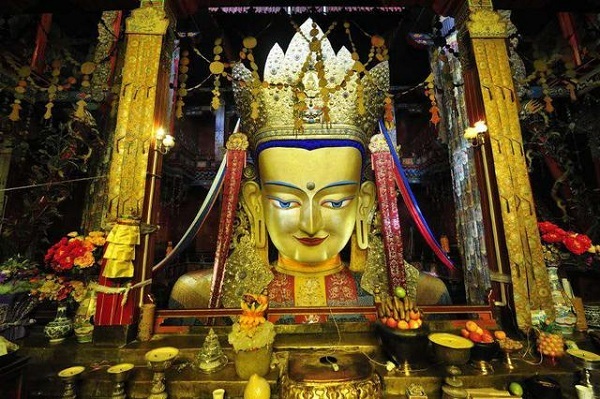
The most magnificent Buddha statue in Tashi Lhunpo Monastery is settled in a west Maitreya temple, which is called “Jampa Buddha” in Tibetan. The Buddhist hall is divided into five floors, and there are two floors of corridors below. The hall is 30 meters high, all made of stone, with dense seams. In the middle of the hall, there enshrined the famous bronze statue of Buddha, presided over the casting by the Ninth Panchen Lama in 1914. It is also the largest bronze Buddha statue in the world, with 26.2 meters high, squatting on a lotus pedestal as high as 3.8 meters, majestic and solemn. The Buddha statue is decorated with more than 1,400 gems such as pearls, diamonds and corals and contains 279 kg (614 lbs) of gold and 150,000 kg (330,000 lb) of copper. In charge of the future and death, Jampa Buddha has a noble status in the hearts of the Tibetan people.
Stupa Halls
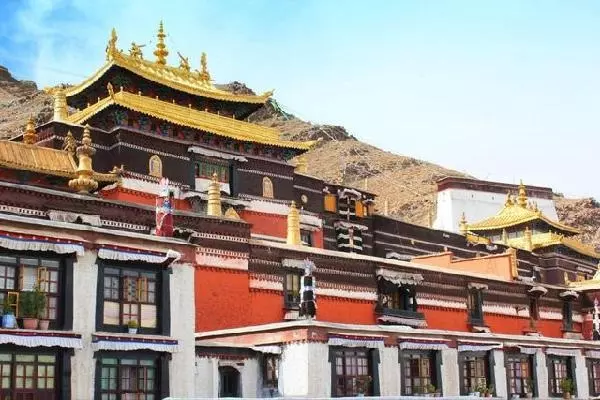
There are 7 stupa halls in the eastern monastery containing the stupas of the past Panchen Lamas. The most famous one is the Jueganxia Hall, where the remains of the fourth Panchen Lama are placed. The Fourth Panchen Lama is a very accomplished living Buddha in the history of Tibet and the teacher of the famous Fifth Dalai Lama. The stupa is 11 meters high, with gold and silver as the bottom, wrapped in silver skin, inlaid with jewels, jade and other objects. The 5th to 9th Panchen Lamas were buried together in the Stupa Hall called "Zhashinanjie". Their remains were packed in 5 sandalwood boxes and placed in the bottle of each stupa.
Travel Tips
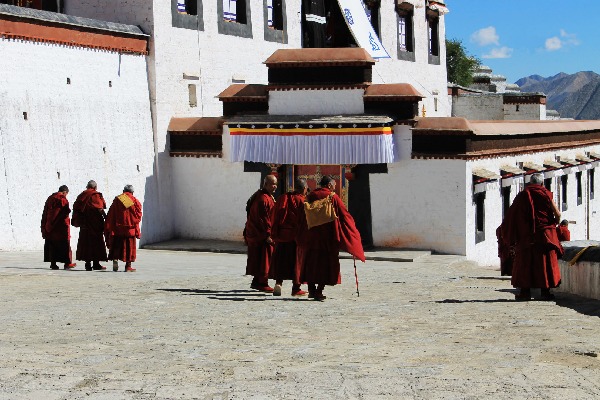
- Located in the northeast of Tashi Lhunpo Monastery, there is a great white wall thafloat-rightt is to hang with massive, colorful thangka during Tashilhunpo Thangka Unveiling Festival. Tourists can overlook the Tashilhunpo Monastery and Shigatse City at this place.
- There are strict restrictions on taking pictures in the monastery, and the price is uncertain, varying from CNY10 to CNY50. So it is better to ask the lamas before taking.
- Circumnavigating the compound is a 1hr kora that takes you into the hills behind Tashi Lhunpo Monastery.
- On the 14th, 15th, and 16th of May in the Tibetan calendar, the Buddhist Exhibition Platform will display the thangkas of past Buddha, the present Buddha and the future giant Buddha, which should not be missed.
- Festivals celebrated in Tashi Lhunpo Monastery:
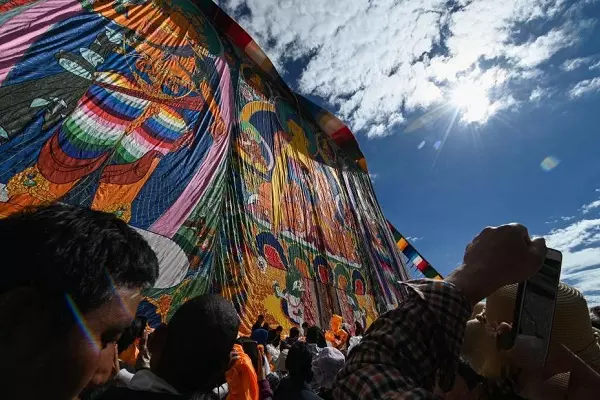
- Thangka Unveiling Festival: it falls around May 15 of the Tibetan calendar and lasts for 3 days. And the celebration place is the Buddhist Exhibition Platform.
- Chotrul Duchen: It takes place on the fifteenth day of the first month in the Tibetan calendar
- Saga Dawa Festival: It falls in the fourth month of the Tibetan Calendar.
- Buddha's Descent Day: The festival is in the ninth month of the Tibetan calendar on the 22nd day.
- There is a shopping street outside Tashi Lhunpo Monastery, which provides tourists with various souvenirs such as traditional Tibetan ornaments, Buddha ritual supplies, Thangka, Buddha statues, etc.
Guangzhou- Foshan- Lhasa- Shigatse- Everest- Lhasa
It's a perfect blend of Lingnan cultural immersion, Tibetan spiritual exploration, and highland natural beauty.
Lhasa- Shalu To Nartang Trek- Shigatse- Lhasa
Follow the ancient trade route and pass through beautiful villages, Buddhist temples, and spectacular canyons.
Kathmandu-Tingri-Shigatse-Lhasa
A legendary trip across the Himalayas and an exploration of ancient monasteries, EBC and Tibet's mysterious landscapes.
Email response within 0.5~24 hours.


